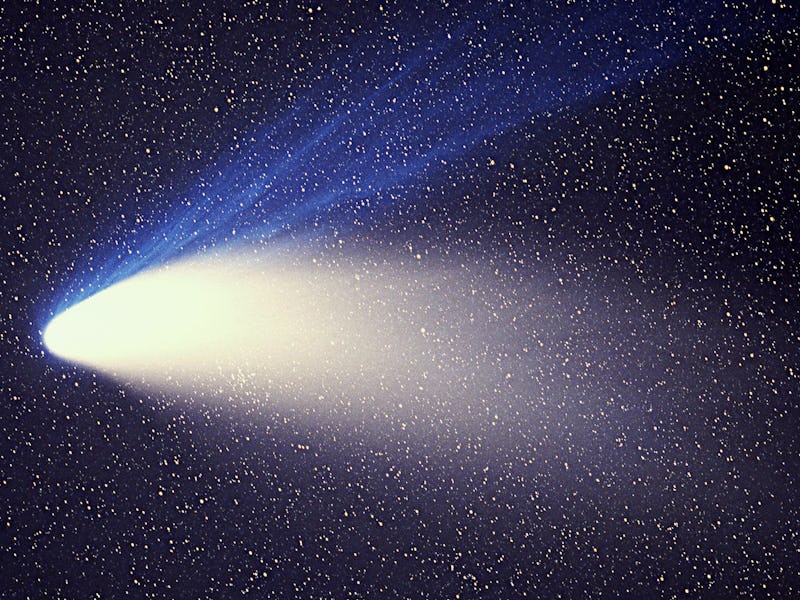What Comet Hale-Bopp Means 20 Years Later
How C/1995 O1 rained chaos and death without entering our atmosphere.

Twenty years ago, on July 23, 1995, astronomers Alan Hale and Thomas Bopp independently discovered the comet that would end up bearing their names. Hale-Bopp, officially C/1995 O1, was cruising by Jupiter, making it one of the most distant comets spotted by amateurs. But it refused to keep its distance.
When it blazed into view on Earth from early 1996 to September 1997 — its icy nucleus and gassy tail bright enough to be seen with the naked eye — Hale-Bopp became the first comet to win the young Internet’s attention. (Hale-Bopp would not be the last, as the saga of the Philae lander demonstrates.) The comet also, unfortunately, caught the eye of another group: the Heaven’s Gate cult.
Heaven’s Gate, led by Marshall Applewhite and Bonnie Nettles, believed the Earth was going to be recycled. To avoid this apocalyptic plowing under, the group committed mass suicide in March 1997, believing their spirits would be able to board a UFO hiding in Hale-Bopp’s tail. The details of the deaths were as perplexing as they were heartbreaking: Members ate phenobarbital mixed in apple sauce and chased it with vodka while wearing fresh Nikes and carrying $5.75 in their pockets. Their website is a bizarre headstone and memorial.
History is rife with doomsday predictions, but media coverage in the ‘90s was unusually deep. Author and religious historian Philip Jenkins argues that it became a “mainstay,” echoing the satanic craze a decade prior.
Comet Hale-Bopp became a doomsday omen for Heaven’s Gate simply by coincidence — the timing was perfectly wrong. It was just another celestial body wrangled into apocalyptic prophecies. Comets have a long history of being viewed as signs of wrath or destruction; the Babylonians saw comets as a sign of fire and brimstone to come.
The next doomsday prediction coming up deals with a different sort of heavenly body: a blood moon in September 2015. But you are going to be fine. The sun’s not going to snuff out terrestrial life for another 2.8 billion years or so. Still, don’t be surprised if some people off themselves before the heavens get a chance.